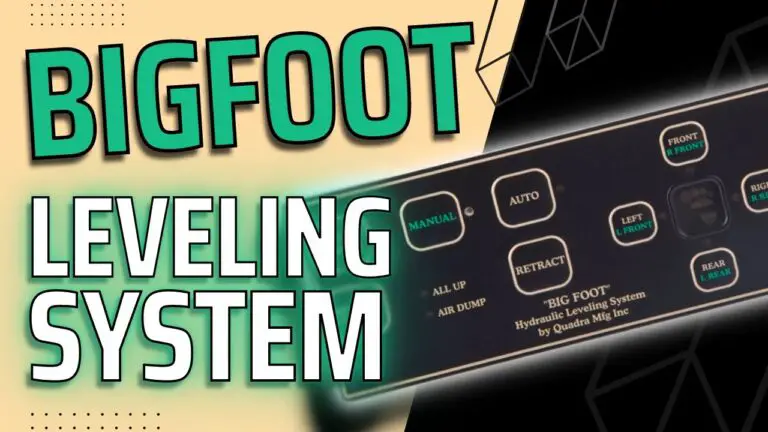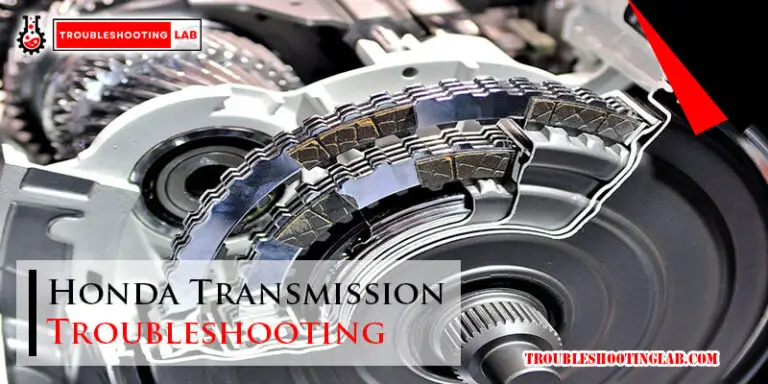Rack And Pinion Troubleshooting: Ultimate Guide to Fix Common Issues
Rack and pinion steering systems are common in many vehicles. They ensure smooth and precise control.
Understanding how to troubleshoot these systems can save you time and money. Rack and pinion systems are vital for steering your vehicle. When they malfunction, it affects your car’s handling and safety. In this guide, we’ll explore common issues and solutions.
From leaks to worn-out components, you’ll learn how to identify and fix problems. This knowledge will help you maintain your vehicle’s performance. So, let’s dive into rack and pinion troubleshooting and keep your steering in top shape.
Introduction To Rack And Pinion
Rack and pinion steering is vital for vehicle control. It helps drivers steer smoothly and precisely. Understanding this system can help identify issues early. This guide will cover the basics and importance of rack and pinion.
What Is Rack And Pinion?
The rack and pinion system converts rotational motion into linear motion. It consists of a gear (the pinion) and a toothed bar (the rack). When you turn the steering wheel, the pinion moves the rack. This movement turns the wheels of the car. It is a simple yet effective mechanism. Most modern vehicles use this system for steering.
Importance In Vehicle Steering
The rack and pinion system ensures precise steering. It provides a direct connection between the steering wheel and the wheels. This direct connection offers better control and feedback. Drivers can feel the road conditions through the steering wheel. This system also reduces steering effort, making it easier to drive. It is reliable and requires less maintenance compared to older systems.

Credit: www.autotechiq.com
Identifying Common Issues
Identifying common issues with your rack and pinion steering system is crucial for maintaining a smooth and safe driving experience. This section will help you recognize the signs of trouble early, ensuring timely repairs and avoiding costly damage.
Symptoms Of Rack And Pinion Problems
Recognizing the symptoms of rack and pinion problems can save you from severe issues down the road. Here are some common indicators:
- Steering Wheel Vibration: If you feel vibrations in the steering wheel, it could indicate a problem with the rack and pinion.
- Loose Steering: A loose steering wheel suggests worn-out components in the rack and pinion system.
- Uneven Tire Wear: Uneven tire wear often points to alignment issues related to the rack and pinion.
- Power Steering Fluid Leak: A noticeable drop in power steering fluid can signal a leak in the rack and pinion.
Early Warning Signs
Spotting early warning signs can prevent major issues. Pay attention to these signs:
- Strange Noises: Listen for clunking or whining noises when turning the steering wheel.
- Stiff Steering: Difficulty in turning the steering wheel can indicate a failing rack and pinion.
- Fluid Smell: A burnt smell from the power steering fluid may mean overheating or leaks.
- Delayed Response: If the steering response feels delayed, check the rack and pinion system.
| Symptom | Possible Issue |
|---|---|
| Vibration in Steering Wheel | Worn-out components or misalignment |
| Loose Steering | Worn rack and pinion parts |
| Uneven Tire Wear | Alignment issues |
| Power Steering Fluid Leak | Leak in the system |
By understanding and identifying these common issues, you can take proactive steps to maintain your vehicle’s steering system in top condition.
Diagnosing Leaks
Identifying leaks in your rack and pinion system helps ensure smooth steering. Check for fluid under your car and inspect seals. Early detection prevents expensive repairs.
Rack and pinion systems are crucial in steering mechanisms. Leaks within these systems can lead to serious issues. Diagnosing leaks early can save time and money. Knowing the signs and causes of leaks is essential. This section will help you identify and understand rack and pinion leaks.Common Causes Of Leaks
Leaks in rack and pinion systems often stem from worn seals. Seals wear out due to age or frequent use. Contaminated fluid can also damage seals. Another common cause is a damaged or cracked housing. External damage from road debris may also lead to leaks.Steps To Identify Leaks
First, check the power steering fluid reservoir. If the fluid level is low, a leak might be present. Next, inspect the rack and pinion assembly. Look for wet or greasy areas around the seals and housing. Pay attention to puddles or stains under the vehicle. These can indicate a leak. Use a flashlight to inspect hard-to-see areas. Turn the steering wheel and watch for fluid leaks during movement. Finally, consult a professional mechanic if you cannot find the leak. Diagnosing leaks in your rack and pinion system is vital. Understanding the common causes and following the steps to identify leaks will help maintain your vehicle’s steering performance. “`
Credit: m.youtube.com
Troubleshooting Noisy Steering
Steering noise can be annoying and concerning for drivers. Identifying and fixing the source of noisy steering is crucial for vehicle safety and comfort. In this section, we will explore the common causes of noisy steering and practical solutions to reduce the noise.
Causes Of Noisy Steering
There are several reasons why your steering system might be noisy. One common cause is low power steering fluid. A lack of fluid can lead to a whining sound. Another cause is worn-out steering components. Parts like the rack and pinion may wear down over time, causing clunking or knocking noises. Loose or damaged belts can also create a squealing noise when you turn the steering wheel. Misalignment of the steering system may result in a groaning or creaking sound.
Solutions To Reduce Noise
First, check the power steering fluid level. Refill it if necessary. Use the manufacturer’s recommended fluid to avoid damage. Inspect the steering components for wear and tear. Replace any worn parts like the rack and pinion. Tighten or replace loose or damaged belts. Belts should be in good condition and properly tensioned. Ensure the steering system is correctly aligned. Proper alignment prevents unnecessary strain on the components.
Fixing Steering Tightness
Fixing steering tightness in your vehicle can significantly improve your driving experience. Tight steering can make your car difficult to handle. It can also be a sign of more serious issues. Understanding the causes and solutions for tight steering is crucial for safety and comfort.
Reasons For Tight Steering
Various factors can cause tight steering. One common reason is low power steering fluid. The fluid helps in smooth movement. Without enough fluid, the steering becomes stiff. Another reason can be a worn-out power steering belt. The belt helps the system work smoothly. If it is damaged, steering becomes difficult. Sometimes, the issue lies in the steering rack itself. A damaged or worn-out rack can lead to tightness.
Methods To Loosen Steering
There are several ways to address tight steering. First, check the power steering fluid level. If it is low, refill it to the recommended level. This simple step can often solve the problem. Next, inspect the power steering belt for wear and tear. Replace it if needed. This can restore easy movement. Another method is to lubricate the steering system. Proper lubrication reduces friction and makes turning the wheel easier.
In some cases, the steering rack may need replacement. A new rack can resolve persistent tightness. Regular maintenance checks can prevent these issues. Keeping the system in good shape ensures a smoother driving experience.
Addressing Steering Wheel Vibration
Addressing steering wheel vibration is crucial for maintaining a smooth driving experience. A vibrating steering wheel is not only annoying but also a sign of potential issues in the rack and pinion system. Understanding the sources of vibration and taking corrective measures can help ensure your vehicle’s steering remains responsive and safe.
Sources Of Vibration
Various factors can cause steering wheel vibration. Worn-out or unbalanced tires are common culprits. Bent rims also contribute to vibration. Misaligned wheels can cause uneven tire wear, leading to vibrations.
Issues in the rack and pinion system itself can also be a source. Loose or damaged steering components often result in a vibrating steering wheel. Faulty or worn-out tie rods can cause similar symptoms. Identifying the exact source of vibration is the first step towards fixing it.
Corrective Measures
Once the source of the vibration is identified, corrective measures can be taken. Balancing the tires can solve many vibration issues. Regularly checking tire pressure is also important.
If the wheels are misaligned, a professional alignment service can help. Inspecting and replacing damaged or bent rims is crucial. Ensuring the rack and pinion system is in good condition prevents further issues.
Replacing worn-out tie rods and steering components can also solve vibration problems. Regular maintenance and inspections can prevent many of these issues. Keeping your vehicle in top condition ensures a smooth and safe driving experience.
Repair And Replacement Options
Rack and pinion systems play a crucial role in vehicle steering. Over time, these systems may develop issues. Addressing these issues promptly is essential for safe driving. This section will guide you through the repair and replacement options.
When To Repair
Repair is a good option for minor issues. If you notice fluid leaks, a repair may suffice. Also, if there’s slight play in the steering wheel, a repair can fix it. Listen for unusual noises during steering. Minor sounds often indicate a need for repair. Repairs can also address worn seals and gaskets. Always consult a professional before deciding.
When To Replace
Replacement is necessary for severe damage. If the steering feels loose, consider replacement. Also, if the rack and pinion system is leaking heavily, replacement is best. Strange noises that persist after repairs signal the need for a new system. A damaged rack or pinion gear often requires a full replacement. Always ensure the new system is compatible with your vehicle.

Credit: m.youtube.com
Preventive Maintenance Tips
Rack and pinion systems are vital for vehicle steering. Keeping them in good shape ensures safe and smooth driving. Preventive maintenance can prolong their life and reduce the risk of failures. Below are some essential tips to maintain your rack and pinion system effectively.
Regular Inspection Routine
Inspect the rack and pinion system regularly. Look for any signs of wear or damage. Check for leaks around the seals. Leaks can lead to steering problems. Examine the mounting bolts. Ensure they are tight and secure. Loose bolts can cause misalignment. Misalignment affects steering performance.
Best Practices For Longevity
Keep the system clean. Dirt and debris can damage components. Use the right type of power steering fluid. The wrong fluid can cause damage. Replace the fluid as recommended by the manufacturer. Regular fluid changes ensure smooth operation. Lubricate moving parts to reduce wear. Proper lubrication extends the life of the system. Avoid harsh driving conditions. Rough roads can strain the rack and pinion.
Follow the manufacturer’s maintenance schedule. Regular maintenance prevents unexpected issues. It keeps the system running smoothly. Always address issues promptly. Ignoring problems can lead to bigger, costlier repairs.
Frequently Asked Questions
What Are Common Signs Of Rack And Pinion Problems?
Common signs include steering wheel vibrations, unusual noises, or difficulty turning the wheel.
How Do You Diagnose Rack And Pinion Issues?
Check for steering fluid leaks, inspect for worn-out parts, and listen for unusual sounds.
What Causes A Rack And Pinion To Fail?
Common causes include wear and tear, fluid leaks, and damage from road debris or accidents.
Can I Drive With A Bad Rack And Pinion?
It’s unsafe to drive with a failing rack and pinion. It can cause steering problems.
How Much Does It Cost To Fix Rack And Pinion?
Repair costs vary. Generally, it ranges from $300 to $1,000, depending on the vehicle and damage.
Conclusion
Troubleshooting rack and pinion systems can seem challenging, but it’s doable. Regular maintenance helps prevent common issues. Listen for unusual noises and check for leaks. Ensure proper alignment to avoid steering problems. Addressing minor issues early can save time and money.
Always consult a professional for complex repairs. Keep your vehicle running smoothly with these tips. Safe driving!






